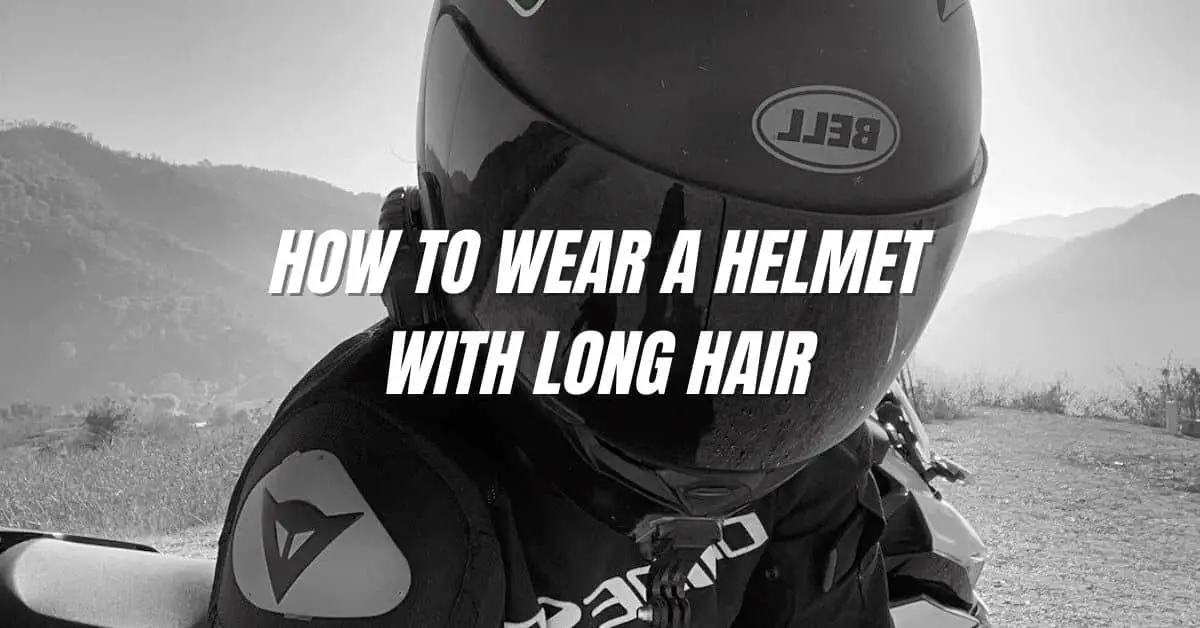You probably have never had any difficulty arranging your hair under a motorcycle helmet if you have shorter hair. But for those with long hair (including myself and most female riders), finding the best way to wear a long-haired helmet is a constant battle. You almost always sacrifice your hairstyle and worry about hair fall and hair loss in the long term. So let’s look at some practical ways of helmet hair management to turn around a bad hair day and go from flat hair, frizzy hair, and messy hair to beautiful hair!
To wear a motorcycle helmet with long hair, you can use the Hightail hair protector, braid your hair, use a balaclava or head sock or bandana, tie your hair into a ponytail, use a doo-rag or scarf, wear a neck gaiter or else just let it hang loose!
Let’s get into each one of these 8 options in some detail.
Table of contents
- 1. The Hightail Hair Protector
- 2. Braid your hair
- 3. Use a Balaclava, Head sock or bandana.
- 4. Tie a ponytail
- 5. Wear a Durag/doo-rag or scarf
- 6. Wear a neck gaiter
- 7. Go Gangsta/Hair Commando
- Here are some key points to bear in mind with regards to managing hair with a motorcycle helmet
- Ask me your questions about wearing a helmet with long hair
1. The Hightail Hair Protector
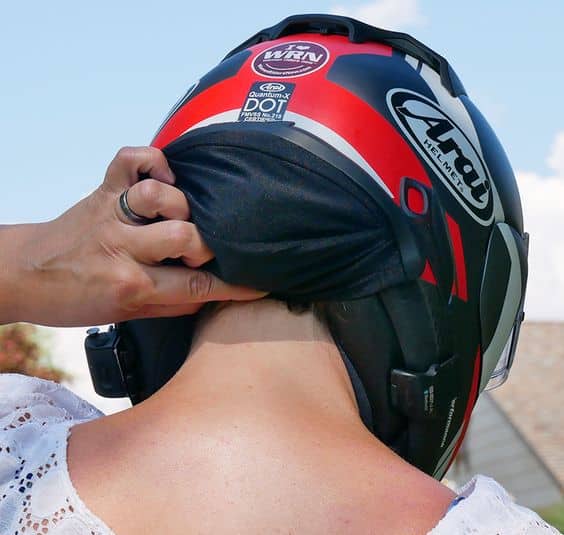
This is my favorite and quite possibly the best solution out there. This is a helmet-mounted contraption. You can basically mount this to your helmet at the back just above your neck (see image). This prevents your hair from getting pressed down and tangled up.
This product attaches as a pocket to allow your hair to naturally sit in. This pocket is away from the neck and outside your helmet. You can tie a low bun and let it sit in the bag. The spandex pocket allows plenty of movement without letting the hair slip out.
The Hightail Hair Protector works with long hair, straight hair, short hair, curly hair, and thick hair — all hair types! You don’t get motorcycle helmet hair or tangled hair when you take off your helmet. Isn’t that amazing!
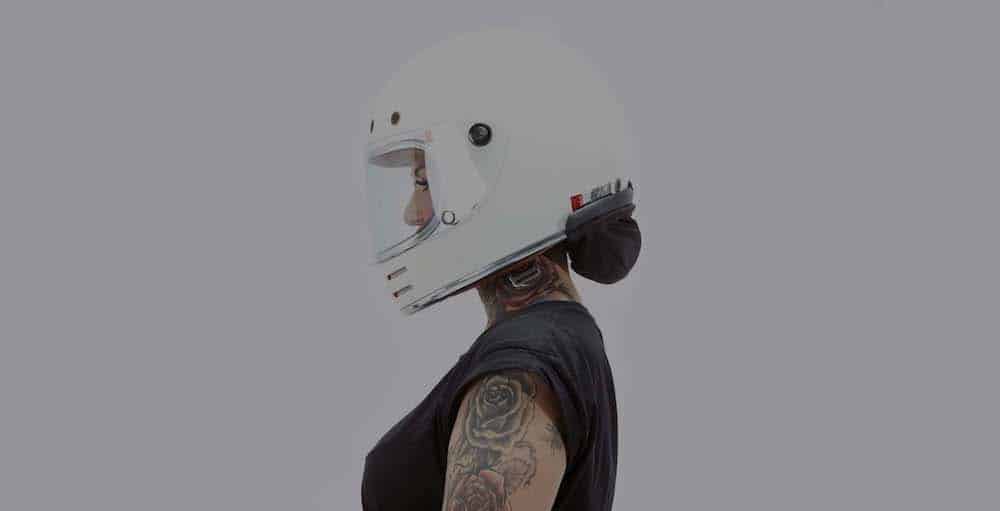
Wearing a skull cap in tandem with the Hightail Hair Protector is a good idea. This can prevent direct contact of your hair to the insides of your helmet or the helmet liner, which a good bike helmet often comes fitted with. The helmet liner must be washed periodically to remove dust and grime that can settle on it from long rides or frequent use.
2. Braid your hair
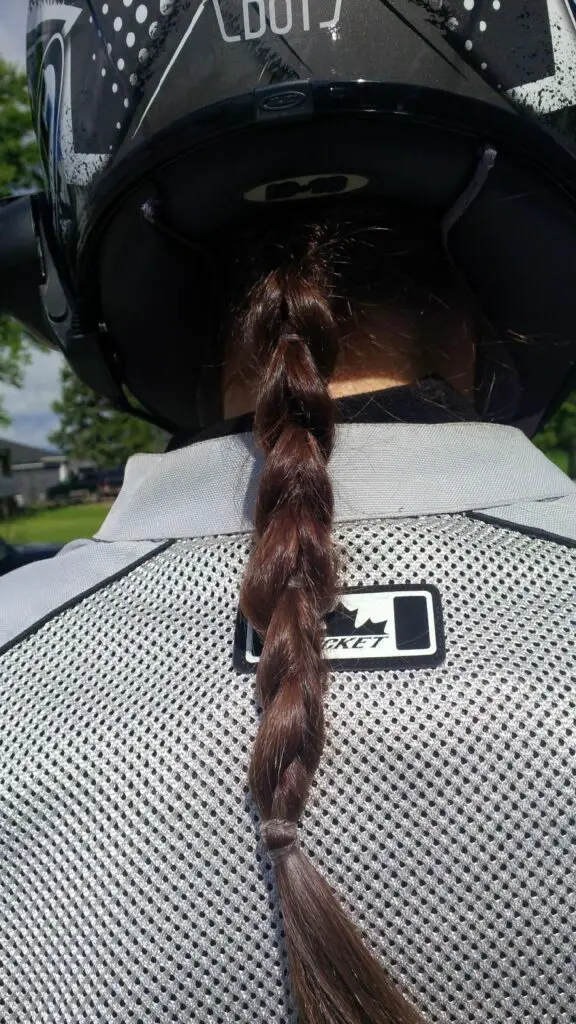
Braiding has been a staple of women and male riders with long hair. With braided hair, you are basically binding the hair or forcing it to stay put in a predictable manner, which wind force or the forces of the helmet can’t really alter. If your hair type has layers of hair that still stick out after braiding, using Bobby pins can be a great way of tucking those in.
Minimize the use of Bobby pins under the helmet, though, because they will start to hurt during long rides.
If you choose to braid your hair, ensure you don’t tie them up too tight. Braiding your hair exposes you to Traction Alopecia, which means hair loss caused by repeated pulling. The more the tension in your braid, the more prone you will be to Traction Alopecia over the long term.
Always braid your hair with just the right amount of tension so that they stay inside your helmet (or the helmet liner) but never too much to risk damaging the ends of your hair.
3. Use a Balaclava, Head sock or bandana.
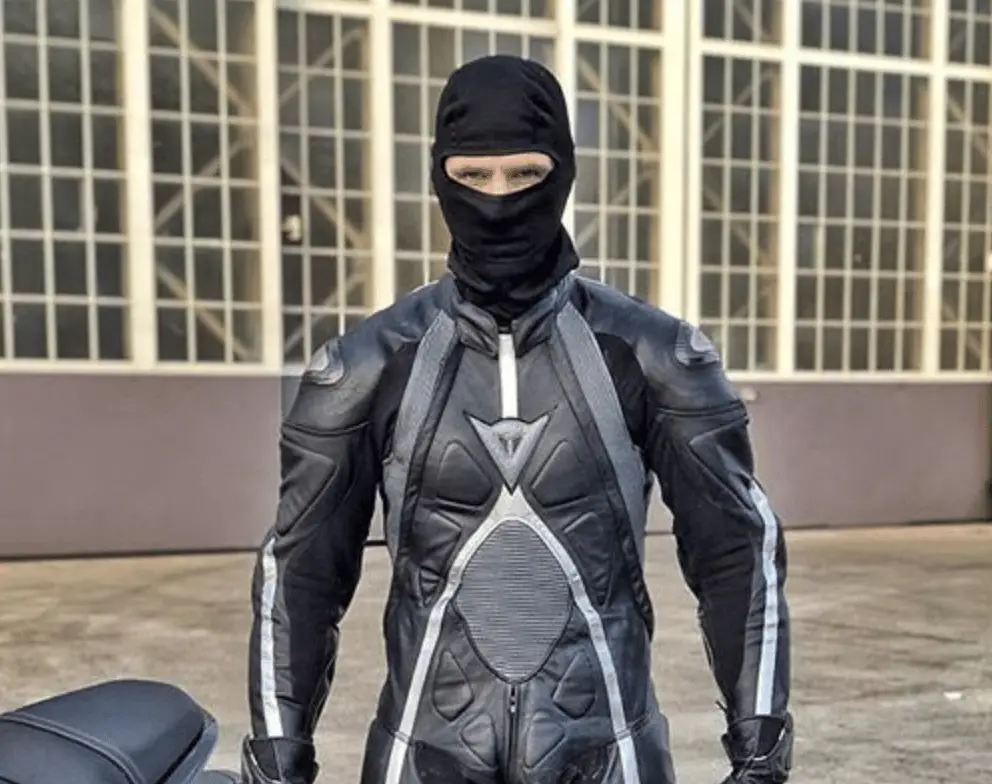
A Balaclava or Head Sock offers protection for your hair and keeps them in place. In addition to your hair, it prevents the face and neck from directly contacting the helmet and dust.
For riders with hair length greater than shoulder length, you can channel out the hair along the back of your neck through the Balaclava and into your jacket.
If necessary, tie a low ponytail to keep the hair together in the jacket or use several elastic bands to keep the hair together as a single long shaft.
You must pick the right size of helmet to allow enough space to wear a balaclava underneath without it getting too tight. If you have a tight helmet, adding a layer of clothing such as a skull cap or Balaclava will make it worse and strain your hair.
Not to mention, that would also cause you a headache on a long ride.
Bandanas are sort of a bare minimum measure. They cover your forehead mainly and don’t help much with channelling the flow of your hair collectively. This is why you would still need a ponytail or braids to manage the entire hair length.
4. Tie a ponytail
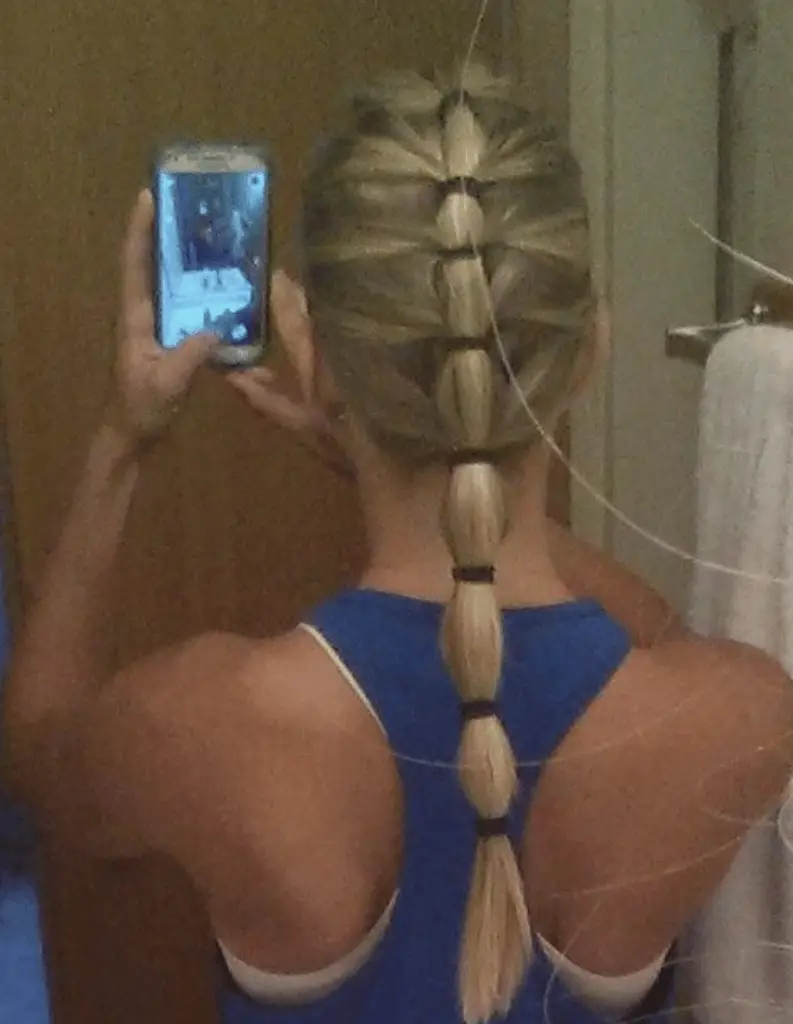
This one is a no-brainer. In fact, most people default to a straight ponytail when they are in a hurry when they are lazy or simply just not informed enough. However, it also works out to be the best solution for some.
It’s essential to remember that you don’t tie a ponytail too tight or too loose. Ensure that the hair on the top of your head is slightly loose to allow some movement when putting on the helmet.
Another point to remember is that you use the right size (thickness) rubber band/rubber ties and enough in number. Using too thin a rubber band can actually entangle your hair.
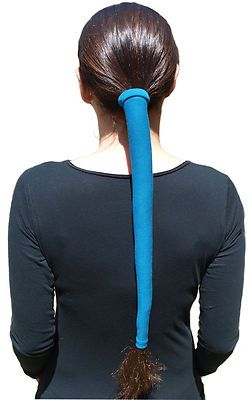
Removing those thin rubber bands after a long ride can be difficult and often cause you to rip hair right out of hair follicles.
BTW you can accessorize your ponytail with leather or cloth hair wraps. They look great and add another cover layer to keep your hair from frizzing or getting tangled up. Hair ties are an alternative to hair wraps.
They look prettier than hair wraps and also hold the hair together well. They are slightly less tidy than a hair wrap, though.
5. Wear a Durag/doo-rag or scarf

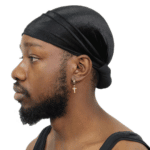
Durags and headscarves are not really different options. They are both very similar forms of head wraps.
A motorcycle rider can tie a low bun in conjunction with wearing a Durag or a scarf. You can also combine either of these with a plain ponytail.
Durags and scarfs act as a layer between the insides of your helmet and your hair.
They cover the top of your head and can somewhat maintain your hairstyle inside the scarf. Either one is a great practical solution. Scarves and Durag are very popular with riders with curly hair.
6. Wear a neck gaiter
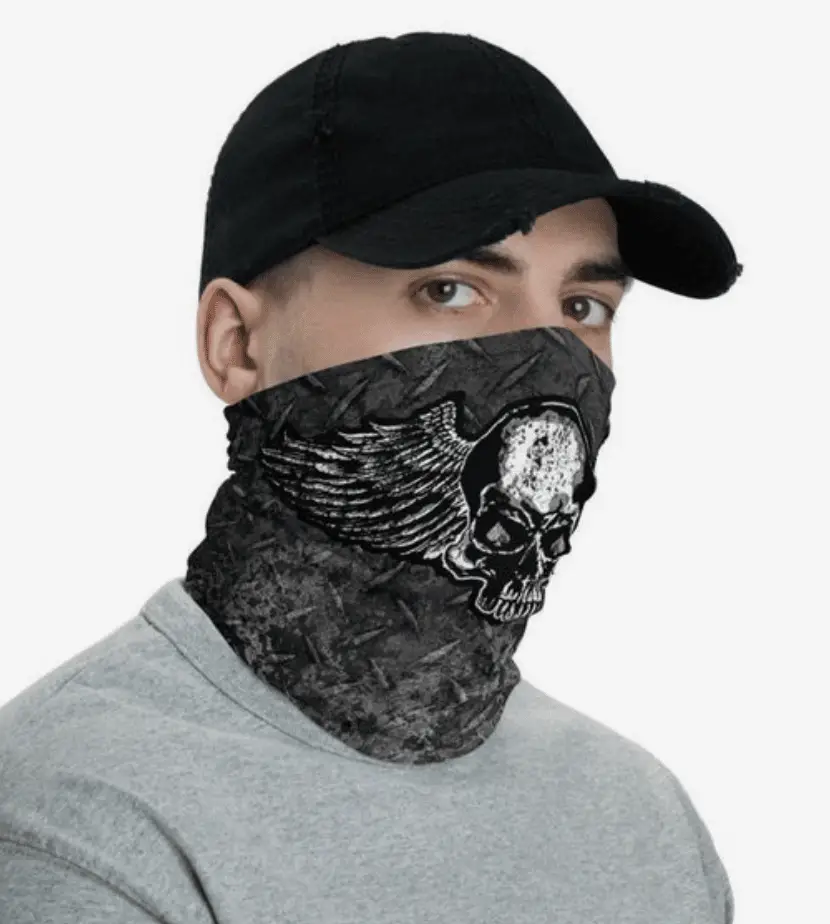
A neck gaiter protects your neck from direct wind blast and dirt but doesn’t cover the top of your head.
Neck gaiters can be used to tube your long hair behind the back down into your jacket. It would be best to use that along with braids or a ponytail.
A neck gaiter is essentially a Balaclava with only its lower half. Neck gaiters also serve to protect you from sunburns around the neck area.
7. Go Gangsta/Hair Commando

This is not going to help your hair in any way. But this will be more exhilarating and visceral.
And if you are not going too fast, long fine hair flying in the wind can be quite a sight.
My hair never got to the point that it was that long. But some female riders have magnificent long hair. And letting them loose and catch the wind is eye candy.
Here are some key points to bear in mind with regards to managing hair with a motorcycle helmet
- If your hair is messy beyond recovery after you take your helmet off, try and use a baseball cap or a hat to cover it. This might save you some embarrassment. I use this trick all the time!
- Make sure you clean the inner lining of your helmet regularly. The inner linings of a helmet get soaked in sweat and dust, which turn to grime if not regularly cleaned.
- Never wear a helmet over wet hair. Let your hair dry to the point where it is slightly moist before putting on your helmet.
- If your hair feels messy and dirty after some motorcycle riding while you are still en route, you can use dry shampoo. But don’t make this a regular feature; dry shampoo is not a substitute for a proper head bath.
- If a full-face helmet doesn’t work for you, regardless of how you try and manage your hair, try a modular helmet. Modular helmets also allow for greater space to add an extra layer such as that of a skull cap, bandana, scarf, head sock or Durag.
- Natural oils such as Argan oil can help prevent frizzy hair from wearing a helmet. Rub just a tad bit before you put on your helmet.
Ask me your questions about wearing a helmet with long hair
Yes, please. I look forward to hearing from you. Send pictures if you would like or even videos my way (you could use the comments section). If you have anything to say, please send it my way. I am happy to receive questions, suggestions and criticism (but let’s keep the language and overall interaction civil).
Thank you, and I will see you next time. 🙂
